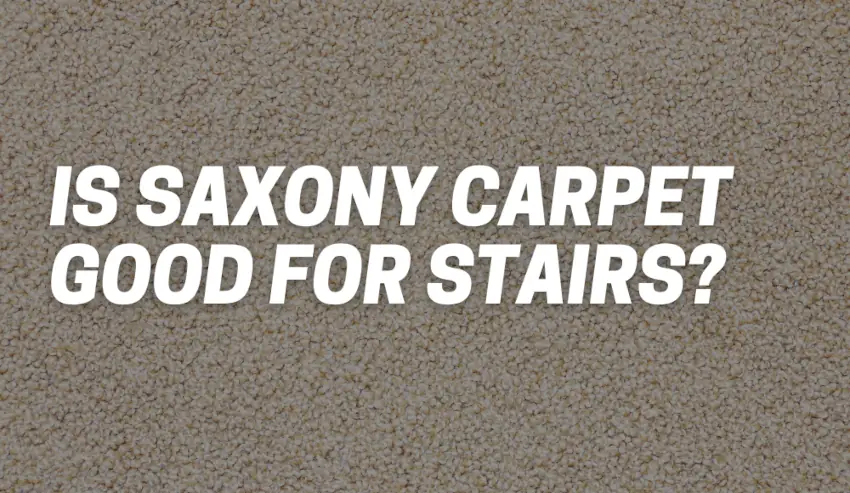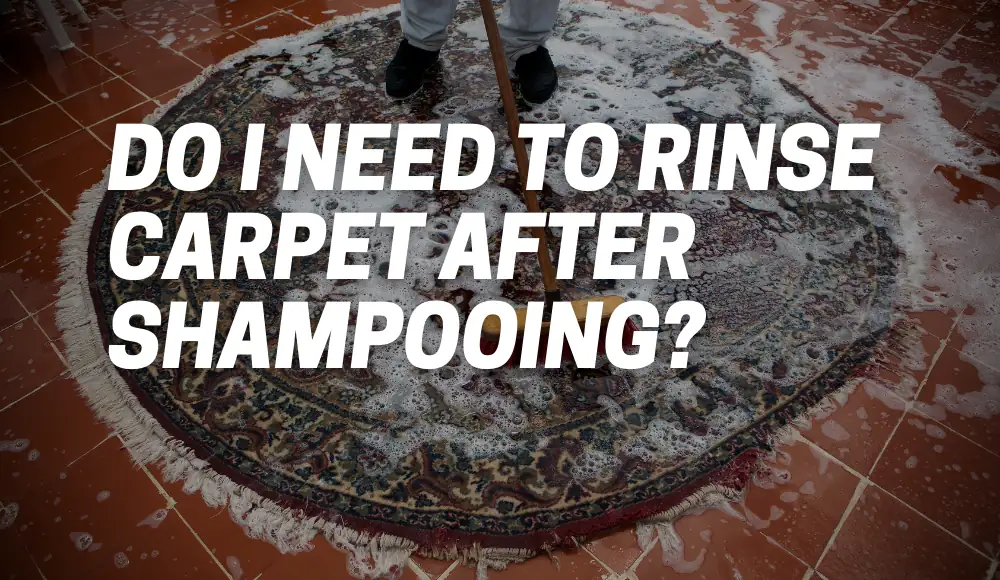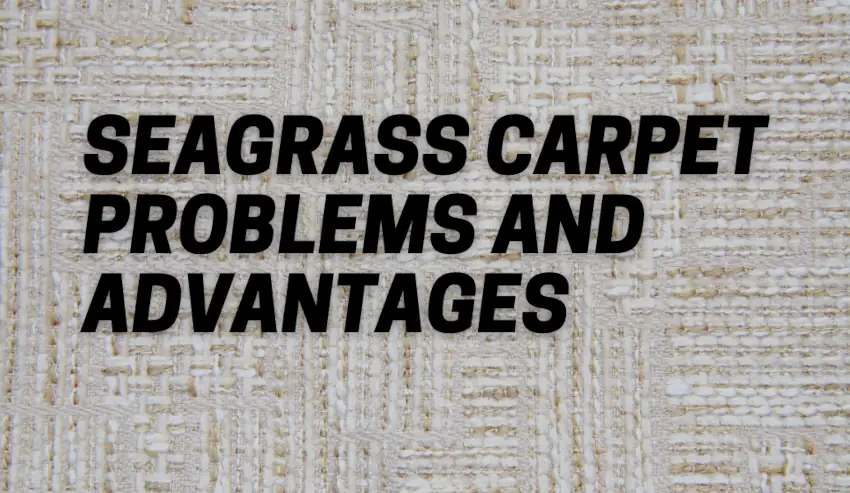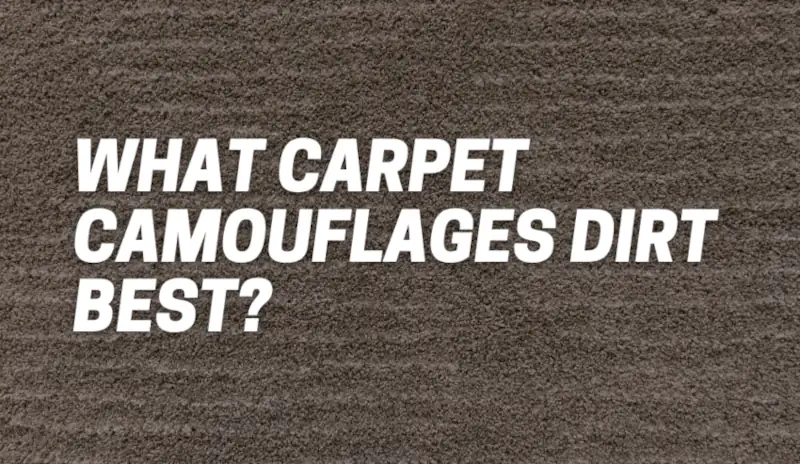Last updated on October 29th, 2023 at 02:37 am
If you’re considering carpeting your stairs, you’ve likely come across the term “Saxony carpet for stairs.” But is it a good choice for this specific application? In this comprehensive guide, we’ll delve into the world of Saxony carpet, exploring its quality, durability, pros and cons, and much more. By the end of this article, you’ll have a clear understanding of whether Saxony carpet is the right fit for your staircase.
What Does Saxony Carpet Mean?
Before we dive into the suitability of Saxony carpet for stairs, let’s clarify what Saxony carpet is.
Saxony carpet is a luxurious and versatile type of carpet characterized by its velvety appearance. It features densely packed, evenly cut fibers that create a smooth, uniform surface. The plush texture of Saxony carpet makes it a popular choice for bedrooms and living rooms.
However, its potential use on stairs is a subject of interest for homeowners looking to balance style and practicality.
Is Saxony Carpet Any Good for Stairs?
One of the most common questions homeowners have is whether Saxony carpet is a suitable option for stairs. The answer depends on several factors, including the quality and texture of the carpet. Here are some key considerations:
Quality of Saxony Carpet
The quality of Saxony carpet can vary significantly. Higher-quality Saxony carpets tend to have tighter and denser fiber construction, making them more durable. When choosing Saxony carpet for stairs, opt for a higher-quality variant, as stairs receive a high level of foot traffic and need a carpet that can withstand wear and tear.
In particular, look for Saxony carpet with a high twist level. The twist level refers to the number of times the carpet’s fibers are twisted together per inch. A higher twist level usually results in a more durable carpet, which is especially important for areas with heavy foot traffic, like stairs.
Durability of Saxony Carpet on Stairs
Stairs endure heavy foot traffic, and a carpet choice must be able to handle this. Saxony carpet, especially the high-quality variety with a high twist level, can be durable enough for stairs. However, it’s essential to consider other factors like the density of the fibers, the backing material, and the type of padding used during installation. These components play a crucial role in the carpet’s ability to withstand the rigors of staircase use.

Saxony Carpet Pros and Cons
Let’s weigh the pros and cons of using Saxony carpet on stairs:
Pros:
- Luxurious Appearance: Saxony carpet offers a plush and velvety texture that exudes elegance. It can enhance the visual appeal of your staircase.
- Variety of Colors and Styles: Saxony carpet comes in various colors and styles, allowing you to choose one that complements your home’s decor.
- Comfortable to Walk On: The soft texture of Saxony carpet provides a comfortable and cozy surface to walk on, making your stairs more inviting.
Cons:
- Visible Footprints and Vacuum Marks: Saxony carpet is known for showing footprints and vacuum marks more than other carpet types. This can be a concern, especially if your stairs receive frequent use.
- Maintenance Challenges: Keeping Saxony carpet clean and free of stains may require more effort than some other carpet types. Regular vacuuming and spot cleaning are necessary to maintain its appearance.
- Not Ideal for High-Traffic Areas: Unless you choose a high-twist Saxony carpet, it may not be the best choice for high-traffic areas. Stairs often see significant wear and tear, and a less durable Saxony carpet may show signs of use quickly.
Textured Saxony Carpet Pros and Cons
Textured Saxony carpet is a variation that can be considered for stairs. It offers a similar luxurious look but with enhanced durability and better resistance to visible marks. While textured Saxony can be a good choice for stairs, it’s essential to consider your personal preferences and style when making a decision.
It retains the plushness and elegance of traditional Saxony but features a modified surface texture that helps hide footprints, vacuum lines, and other marks more effectively. This is achieved by altering the direction of the fibers and incorporating irregular twists and turns in the pile. The result is a carpet with a more textured, casual, and less formal appearance.
Pros of Textured Saxony Carpet:
- Comfort: Textured Saxony carpet provides a soft and comfortable surface to walk on, making it an excellent choice for areas where you want to create a cozy and inviting atmosphere. It’s especially popular for bedrooms and living rooms.
- Texture: The textured surface of this carpet type offers a more casual and less formal appearance compared to traditional Saxony. It adds visual interest and depth to your space, making it a versatile choice for various interior design styles.
- Durability: Textured Saxony carpet is often considered more durable than traditional Saxony, particularly in terms of its ability to hide footprints, vacuum marks, and other minor imperfections. This makes it practical for areas with high foot traffic.
- Stain Resistance: The textured surface can also contribute to better stain resistance, as spills and stains may be less visible due to the irregular texture. This can be advantageous in households with children or pets.
- Versatility: Textured Saxony is a versatile option that can be used in various areas of your home, including hallways, stairs, and family rooms. Its combination of comfort and durability makes it suitable for different settings.
Cons of Textured Saxony Carpet:
- Maintenance: While textured Saxony is generally easier to maintain than traditional Saxony in terms of hiding marks, it still requires regular vacuuming and cleaning to keep it in top condition. The textured surface can trap dirt and debris, so upkeep is necessary.
- Professional Installation: Achieving a quality installation with textured Saxony carpet, particularly on stairs and in challenging spaces, may require professional installation. Proper installation is essential for the carpet’s longevity.
- Not Ideal for High-Traffic Areas: While it’s more durable than traditional Saxony, textured Saxony may not be the most durable carpet option for extremely high-traffic areas. If you expect your carpet to endure heavy use, you might consider other carpet types like Berber or commercial-grade carpets.
- Aesthetic Preferences: The more casual appearance of textured Saxony may not be to everyone’s taste. If you’re seeking a very formal or luxurious look, traditional Saxony or other carpet types might be more suitable.
However, like any carpet type, it has its limitations, and it’s essential to choose the right flooring option that aligns with your lifestyle and design preferences.
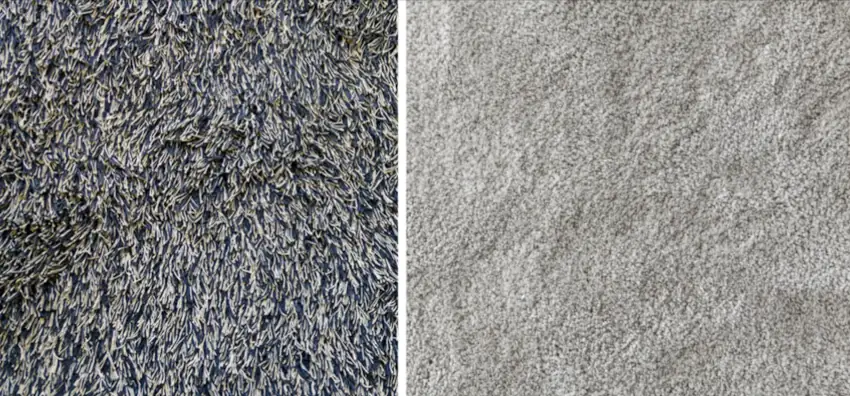
Is Saxony or Twist Carpet Better for Stairs?
Both Saxony and twist carpets have their merits. Twist carpets, which have tightly twisted fibers, are known for their durability and resilience. While Saxony carpet can work for stairs, if durability is your primary concern, twist carpet might be the better choice. Twist carpets are often more resistant to matting and wear, which can be advantageous on stairs where foot traffic is concentrated.
On the other hand, if you place a higher premium on a plush and elegant appearance and are willing to perform regular maintenance, Saxony carpet can be a suitable option for stairs. It adds a touch of luxury and sophistication to your staircase.
Ultimately, the decision comes down to your specific needs and style preferences. Consider the level of traffic your stairs receive, the amount of maintenance you’re willing to undertake, and your aesthetic goals when choosing between Saxony and twist carpet for your stairs.
Best Types of Saxony Carpet for Stairs
If you’ve decided that Saxony carpet is the right option for your stairs, it’s essential to choose the best type. Here are some recommendations:
- High-Twist Saxony: Opt for a Saxony carpet with a high twist level, as this enhances its durability. High-twist Saxony carpets are designed to withstand the heavy traffic that stairs experience.
- Textured Saxony: As mentioned earlier, textured Saxony carpet is a great option for stairs due to its enhanced resistance to visible marks. The texture helps disguise the effects of foot traffic and daily use.
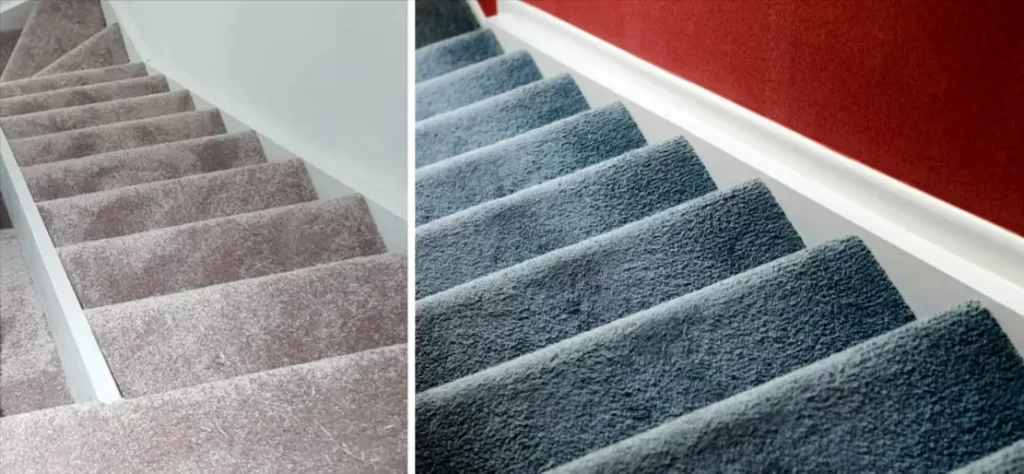
How to Maintain Saxony Carpet on Stairs
To ensure your Saxony carpet stays in excellent condition on your stairs, follow these maintenance tips:
- Regular Vacuuming: Vacuum at least once a week to remove dirt and debris. Use a vacuum with a beater brush or adjustable height to ensure thorough cleaning. Vacuuming helps prevent the buildup of dirt and debris that can wear down the carpet fibers.
- Spot Cleaning: Address spills and stains promptly using appropriate cleaning solutions. It’s essential to blot the stain gently, rather than rubbing it, to prevent damage to the carpet fibers.
- Professional Cleaning: Consider professional cleaning at least once a year to refresh your carpet’s appearance and remove deep-seated dirt. Professional cleaning can extend the lifespan of your Saxony carpet.
- Carpet Runners: For added protection, consider using carpet runners on the high-traffic areas of your stairs. Runners can reduce the wear and tear on the carpet, extending its life.
Are There Alternatives to Saxony Carpet for Stairs?
While Saxony carpet can be a good choice for stairs, there are alternatives worth considering:
- Berber Carpet: Berber carpet is known for its durability and stain resistance. It has a looped pile construction that is less likely to show wear and tear.
- Plush Carpet: Plush carpet offers a soft and luxurious feel, similar to Saxony. It’s a popular choice for bedrooms but may not be as practical for stairs.
- Frieze Carpet: Frieze carpet has highly twisted, casual fibers that enhance durability and resistance to visible marks. It’s an excellent choice for stairs that receive heavy traffic.
When selecting an alternative, consider your specific needs and style preferences. Each carpet type has its unique characteristics, and the right choice depends on your priorities.
Cost Considerations for Using Saxony Carpet on Stairs
The cost of using Saxony carpet for stairs can vary based on factors like quality, style, and installation. Higher-quality Saxony carpets tend to be more expensive, but they offer better durability and a luxurious look.
The average price of Saxony carpet can vary depending on the factors mentioned earlier, such as quality, brand, style, and location. However, to provide a general estimate, Saxony carpet typically ranges in price from $2 to $10 per square foot.
Here’s a breakdown of the average price range for Saxony carpet:
Saxony carpet prices
- Low-End Saxony: Entry-level Saxony carpet, often made from less expensive materials and with basic features, may start at around $2 to $4 per square foot.
- Mid-Range Saxony: Mid-range Saxony carpet, with better quality and additional features like enhanced durability or stain resistance, may be priced in the range of $4 to $6 per square foot.
- High-End Saxony: High-end Saxony carpet, featuring premium materials, exceptional quality, and advanced features, can cost between $6 and $10 per square foot or more.
Additionally, consider the cost of professional installation if you’re not confident in your DIY skills. Proper installation is crucial for ensuring the carpet’s longevity and appearance on your stairs.
Is Professional Installation Necessary for Saxony Carpet on Stairs?
While DIY installation is an option for some, professional installation is often recommended for stairs. Staircases present unique challenges that professionals are trained to handle, ensuring a secure and long-lasting carpeting solution. Proper installation involves securing the carpet tightly to the stairs, and using appropriate tools and techniques to prevent shifting and bunching.
Maintenance and Cleaning Tips for Saxony Carpet on Stairs
Proper maintenance is crucial to keep your Saxony carpet in top condition on your stairs. Follow these cleaning tips:
- Regular Vacuuming: Vacuum at least once a week to remove dirt and debris. Use a vacuum with a beater brush or adjustable height to ensure thorough cleaning. Vacuuming helps prevent the buildup of dirt and debris that can wear down the carpet fibers.
- Spot Cleaning: Tackle spills and stains promptly using a carpet cleaner appropriate for your carpet type. Blot the stain gently, rather than rubbing it, to prevent damage to the fibers.
- Professional Cleaning: Consider professional cleaning at least once a year to refresh your carpet’s appearance and remove deep-seated dirt. Professional cleaning can extend the lifespan of your Saxony carpet.
- Carpet Runners: For added protection, consider using carpet runners on the high-traffic areas of your stairs. Runners can reduce the wear and tear on the carpet, extending its life.
Comparing Saxony Carpet to Other Carpet Types for Stairs
Let’s compare Saxony carpet to other common carpet types in the context of stair applications:
- Saxony vs. Berber Carpet: Berber carpet is known for its durability and stain resistance. It has a looped pile construction that is less likely to show wear and tear. Saxony, on the other hand, offers a plush and velvety texture, making it a more luxurious choice. Consider your priorities for appearance, comfort, and durability when making a choice.
- Saxony vs. Plush Carpet: Plush carpet provides a luxurious feel similar to Saxony. However, it may not be as durable and can show wear and tear more quickly. It’s important to balance comfort and aesthetics with durability.
- Saxony vs. Frieze Carpet: Frieze carpet has highly twisted, casual fibers that enhance durability and resistance to visible marks. It’s a great choice for stairs that receive heavy traffic. Saxony, with its plush texture, may be preferred for its comfort and elegant appearance.
The choice between Saxony carpet and other carpet types for your stairs depends on your specific needs and preferences. Consider the level of traffic your stairs receive, your aesthetic goals, and your willingness to perform regular maintenance.
How to Choose the Right Color and Style for Saxony Carpet on Stairs
When selecting the color and style for your Saxony carpet on stairs, consider the following tips:
- Light Colors: Light-colored carpets can make a space feel larger and brighter. They can add a sense of openness to your staircase.
- Dark Colors: Dark-colored carpets can add a cozy and elegant touch to your stairs. They can also be practical for hiding stains and marks.
- Patterned Styles: Patterned carpets, such as those with geometric or floral designs, can effectively hide stains and wear, making them a practical choice for stairs. Patterned carpets can also add a unique visual element to your staircase.
Your choice of color and style can significantly impact the overall aesthetic of your stairs. Consider your existing decor and personal preferences when making a selection.
Does Saxony Carpet Flatten?
Over time, Saxony carpet can experience flattening, especially in high-traffic areas. Flattening refers to the fibers losing their original, upright position and becoming compressed due to frequent use. Regular vacuuming and maintenance can help prevent or alleviate flattening.
However, it’s essential to understand that all carpets, including Saxony, may experience some degree of flattening over time. To maintain the carpet’s appearance, consider professional cleaning and, if necessary, fluffing the fibers.
Is a Saxony Carpet a Twist Pile?
Saxony carpet is not typically considered a twist pile carpet. Twist pile carpets are characterized by fibers that are tightly twisted together, creating a more textured and durable surface. Saxony carpet, on the other hand, is known for its dense, even, and uniform appearance with straight, cut fibers. While both carpet types can be suitable for stairs, twist-pile carpets tend to offer better resistance to wear and tear.
Saxony vs. Frieze Carpet
Saxony and frieze carpets have different textures and characteristics. Saxony is known for its plush and velvety appearance, with fibers that are evenly cut and stand upright. In contrast, frieze carpet features highly twisted, casual fibers that create a more textured surface. Frieze carpet is often chosen for its durability and ability to hide footprints and vacuum marks. When deciding between Saxony and frieze for your stairs, consider your preferences for texture and appearance, as well as your maintenance expectations.
Is Saxony Carpet Any Good for Pets?
If you have pets, you may wonder whether Saxony carpet is a suitable choice for stairs. Saxony carpet can be a comfortable choice for pets, as it provides a soft and cozy surface for them to walk on. However, there are some considerations:
- Pet Hair: Saxony carpet may trap pet hair more easily than some other carpet types. Regular vacuuming and grooming of your pets can help reduce the buildup of pet hair.
- Stains and Accidents: Be prepared for potential accidents or stains. It’s essential to clean any pet-related incidents promptly to prevent long-term damage to the carpet.
- Durability: Consider the durability of the Saxony carpet, especially if you have active pets that frequently use the stairs. A higher-twist Saxony may be more resilient.
How Durable Is Saxony Carpet for Dogs?
The durability of Saxony carpet for dogs can vary based on the quality and specific needs of your pets. If you have dogs that are particularly active or have long claws, it’s crucial to choose a high-quality Saxony carpet with a high twist level. Additionally, regular maintenance, including vacuuming and cleaning, can help extend the life of the carpet.
What Is the Difference Between Saxony and Plush Carpet?
The primary difference between Saxony and plush carpet lies in the texture and appearance. Saxony carpet has a dense, even, and uniform appearance with straight, cut fibers that stand upright. Plush carpet, on the other hand, offers a softer and smoother surface with a velvety feel. Both are luxurious choices, but Saxony may be preferred for certain areas like bedrooms and living rooms due to its plush, elegant texture.
Conclusion
Saxony carpet can be a good choice for stairs, provided you select a high-quality variant with a high twist level and take proper care of it. Its plush texture and style options make it an attractive option for those who prioritize comfort and aesthetics. However, it’s essential to consider factors like foot traffic, maintenance, and your personal preferences when making a decision.
Choosing the right carpet for your stairs is a significant decision, and understanding the benefits and limitations of Saxony carpet can help you make an informed choice.
For authoritative information and further guidance on carpet choices, consult resources like The Spruce. These sources offer valuable insights into carpet types, maintenance, and home improvement.
